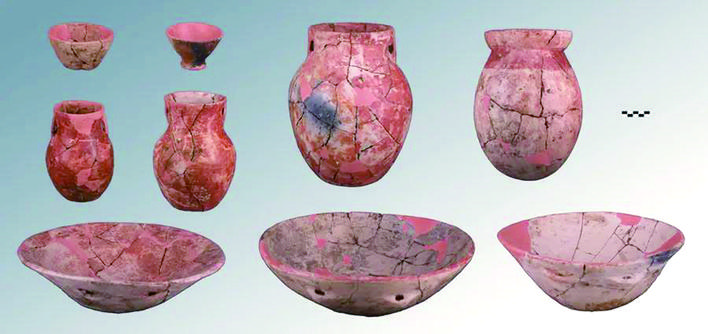| Qiaotou Site: Beer from 9000 Years Ago | |||||||
|
|||||||
A paper titled “Early Evidence for Beer Drinking in a 9000-Year-Old Platform Mound in Southern China” and published in the US scientific journal PLOS ONE has recently focused the attention on the Qiaotou Archaeological Site. The authors of the study are Jiang Leping, researcher at the Zhejiang Provincial Institute of Cultural Relics and Archaeology and leader of the archaeological team at the Shangshan Site, and Wang Jiajing, researcher of the Stanford Archaeology Center at Stanford University. Based on the analysis of ancient pottery found in a tomb at the Qiaotou Site in Yiwu, the researchers concluded that is likely that locals drank beer 9000 years ago. This discovery would make Qiaotou Site one of the earliest places where beer was available in the world. Excavations at the site have been performed to the eighth layer, of which layers five to eight are related to Shangshan Culture and represent the primary cultural connotation of the site. The research team analyzed different types of pottery unearthed at the Qiaotou Site, and some are similar in size to drinking containers used today. Of these potteries, it is worth noting that each piece of pottery can basically be held in one hand like a cup, unlike storage containers that are much larger in size. After analyzing the starch, siliceous phytolith (plant fossil), and microbial residues such as mold and yeast extracted from the inside of the containers, researchers were able to conclude that these residues are consistent with the residues of beer fermentation. The results of the study also showed that rice husks and other plant silica phytoliths are also present in the residue, which may have been added in the beer production process as a starter. The domestication of rice gradually developed between 10,000 and 6,000 years ago in the area along the Yangtze River. Therefore, 9000 years ago, rice must have been in the early stages of domestication and hunter-gatherers still used for food at that time. The team explained that considering that rice harvesting and processing are labor-intensive, the production and use of beer at the Qiaotou Site may have been for ritual purposes. Given that the pottery at the Qiaotou Site was found near a tomb in a non-residential area, the research team concluded that these pots containing beer may have been used in burial ceremonies and rituals for the dead. They also speculate that ritual drinking may be an indispensable part of building social relationships and cooperation. (By Gong Shuhong, translated by Marco Lovisetto, edited by Mariam Ayad)
|
|||||||
